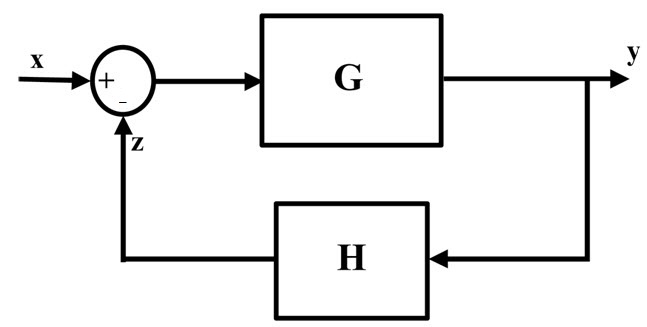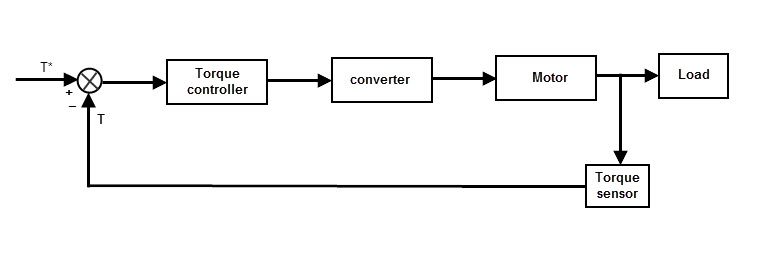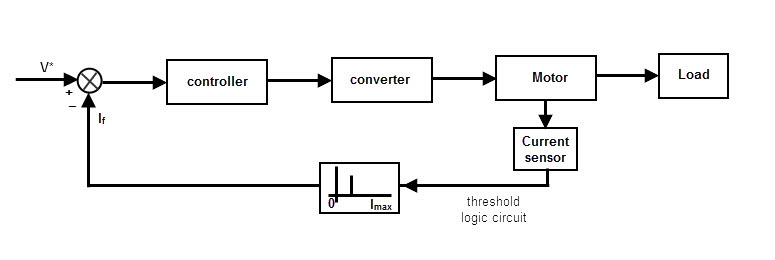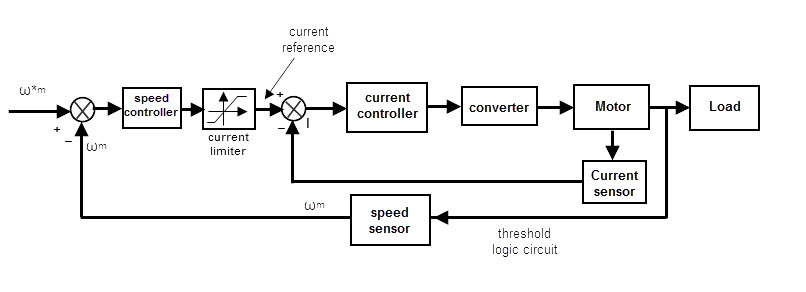Sometimes, to attain the consistency and stability of a system and to produce the desired output of a control systems, we use feedback loop. A feedback is nothing but a part of output signal. This concept is most frequent and important in control systems, to achieve stability of the output. Based on the feedback connection, the control systems are classified into two types. They are Open loop control system and closed loop control system.
Closed loop feedback system
A control system with feedback loop is called “closed loop control system”. In other words, the control system which uses its feedback signal to generate output is called ” closed loop control system”. In these control systems, the input is controlled by the feedback signal from input so that it can correct the errors occurred. Closed loop control systems are two way signal flow systems.
Feedback means , some part of output is taken and connected it to the input of the system to maintain the stability of the control system. By providing a feedback loop, we can convert any open loop control system into closed loop system. The feedback loop provides the automatic correction of the input signal based on the output requirement.
By comparing the generated output with the actual condition, the closed loop system maintains and achieves the desired output. If the produced output is deviated from decided (actual) output, the closed loop control system generates an error signal and the error signal is fed to the input of the signal.
So by adding the error signal to the input, the generated output of the next loop will be corrected. So these are also called as automatic control systems. Closed loop systems are less prone to external disturbances.
The block diagram of the closed loop system is shown below.
As these systems contain feedback loop, the closed loop control systems are also called as “Feedback control systems”. By giving the feedback to the input signal, we can accurately control the output of a control system. A closed loop control system can have more than one feedback loop.
Examples
We use closed loop control systems in many applications of our day to day life. Some of the systems designed based on the concept of open loop control systems are given below.
- Automatic Electric Iron –Depending on the temperature of the iron heating elements were controlled automatically.
- Servo Voltage Stabilizer – Stabilization in voltage is achieved by the feeding the output voltage back to the system.
- Water Level Controller– Water level in the reservoirs decides the input water into it.
- Air Conditioner –Air conditioner automatically adjusts its temperature depending on its room temperature.
- In motor speed regulator using tachometer and/or current sensor , sensor senses the speed and sends a feedback to the system to regulate its speed.
Practical example of feedback system
In market we see some automatic cloth driers.Does anybody know that they are an example of closed loop control system? In automatic control system or closed loop feedback system, we use a transducer at input side of the system to continuously monitor the temperature of the clothes inside the drier. The block diagram of the electric cloth drier is shown below.
The temperature sensor will monitor the state of clothes, whether they are dry or wet and compare it with the submitted input reference. If the clothes state and the desired output are not matched (not similar) then the system generates an error signal and sends it back to the input.
The amplifier produces the amplified output of the signal to the controller , so that , it can adjust the heating elements to the desired output level. So if the clothes are about to dry, then the controller regulates and lowers the temperature or stops the heating process of the heating elements to an extent that it doesn’t burn the clothes in the machine.
The closed loop system is capable of handling the external noise disturbances (which causes to reduce the system efficiency) by means of the feedback signal. For example, if we open the drier, some amount of temperature is lost and the inner temperature of the system will decrease.
Then the feedback sensor will calculate the temperature of the clothes and then it sends the error signal to controller. So that the controller sets the required temperature in the system. This will be the process of handling the error occurrence in clothes drier.
The error signal means the difference between actual output and the produced output and this error signal is provided as an input to the controller to regulate the system output. If the error signal is zero, then only the desired input is equal to the produced output.
Types of Feedback systems
Based on the nature of feedback signal the closed loop control systems are divided in to 2 types. They are
- Positive feedback signal
- Negative feedback signal
1) Positive feedback signal
The closed loop system with positive feedback signal connected to its input is called “Positive feedback system”. The block diagram of positive feedback system is shown below. Positive feedback also known as “Regenerative feedback”.
Example
The best example for positive feedback loop in electronics is ‘op-amp’. We can achieve the positive feedback loop by connecting some part of the output voltage to the non-inverting input by a feedback loop, through a resistor.
If we connect a positive input voltage signal to the non inverting port of the op-amp, it amplifies the input signal and the output will become more positive. So some part of the output is connected back to the input by the feedback loop to produce even high output voltage. As the feedback loop is connected to the input, the output becomes more and more positive. At a point, the output of the op-amp will become saturated.
Similarly if we supply a negative input voltage signal Vin to the op-amp, then the output will become negative. The feedback loop connected to the input will strengthen the amplified signal to become more negative. This means, the feedback signal in positive feedback systems will strengthen the nature of output signal.
The transfer function of positive loop gained system will be A¬V = G / (1-GH). If GH = 1, then the gain of the system will be infinity, thus the system will automatically oscillate even though no input is connected to it. At this state, the system will act like an oscillator.
The positive feedback systems are used to obtain a fast switching response for a conditional input signal. One more example of using positive feedback loop is hysteresis effect. Hysteresis means the residual state of a system, even though it is not supplied with any input. We observe such behavior in some bistable logic gates.
Positive feedback is widely used in timing circuits and oscillators.
2) Negative feedback signal
The closed loop system with negative feedback signal connected to its input is called “Negative feedback system”. The block diagram of negative feedback system is shown below. Negative feedback also known as “Degenerative feedback”.
Negative feedback systems are more stable and improves stability. We will have a discussion on the negative feedback systems and its applications in further tutorials.
Applications
The closed loop control systems are used to control the electronic machines such as voltage and current generators. Apart from that they can also control the speed of a machinery and other parameters of a system. The closed loop control systems are used for the below stated requirements.
- Enhancement of speed of response
- In Protection of devices
- To improve accuracy
Closed loop torque control
The torque control technique will be used in battery operated vehicles such as bikes and cars. When the driver pressed the accelerator, the reference torque T is set by driver. If the torque controlled by the driver is T* then the actual torque T will follow the controlled torque.
The torque sensor placed at the load will send the feedback about motor speed and helps in maintaining the required speed.
Current limit control
In electronic devices, there will be a large amount of current flow by system faults and connection faults. If we doesn’t control the current and unless make some precautionary actions, the electronic device will damage and lead to loss, economically and industrially.
So to limit the current and to control the current flow, we instantiate a current limit controller in the electronic device or system. The current sensor will continuously monitor the current supplied to the motor.
When the current flow in the motor exceeds the required safe level the sensor activates the feedback loop and some amount of current is negatively feed backed to the controller to set the current back to the limit.
When the current flow again reaches the safe limit, the feedback loop deactivates.
Closed loop speed control
This is the most used feedback loop for the drivers. Observe the diagram below, which uses the current sensor and speed sensor to limit the speed of the motor.
In this speed control motor diagram, we see 2 feedback loops, one is for monitoring and controlling the current and another is for controlling the speed. The inner loop is to control the current flow, by using a current sensor. It limits the current or torque of motor to the safe imit. The outer loop, speed control sensor monitors the speed of the motor and sends the feedback to the controller, and controls the speed in it exceeds the predefined level.
Advantages of Open loop control System
- As the closed loop control systems have feedback signal to control the output, these are very accurate and less error prone.
- They can automatically correct the errors by means of the feedback signal.
- Closed loop systems are very accurate.
- Band width of open loop system is very large than closed loop system.
- They can support automation.
- As they have very high noise margin, they are less affected by noise.
Disadvantages of Closed Loop Control System
- They are very complex and complicated to design.
- Economically they are very costlier.
- High maintenance is required.
- Some times the feedback signal causes the system to oscillate, which will give oscillatory response.
- More time and efforts are needed to design a stable closed loop system.
Feedback system summary
- A system is the collection of blocks which are connected together to execute a process.
- The control system is defined as the group of devices which are used to control or regulate the functioning of other system.
- The control system which uses its feedback signal to generate output is called ” closed loop control system”. Examples: Automatic Electric Iron, An Air Conditioner etc.
- Closed loop systems can automatically correct the errors occurred in output by using feedback loop.
- These are more stable than open loop systems but complex in design.
- Based on the nature of feedback signal the closed loop control systems are divided in to 2 types. They are
- Positive feedback signal
- Negative feedback signal
- The closed loop system with positive feedback signal connected to its input is called “Positive feedback system”. Ex : an op-amp, with input connected to positive input pin.
- The closed loop system with negative feedback signal connected to its input is called “Negative feedback system”. Ex : an op-amp, with input connected to positive input pin.
- The feedback system or open loop control system is used to
- Enhancement of speed of response
- In Protection of devices
- To improve accuracy










2 Responses
The content shared by you was really informative and helpful for me. I am glad for that. Kindly continue doing the same.
Very informative and easily understandable. Now I am ready for my tomorrow Quiz